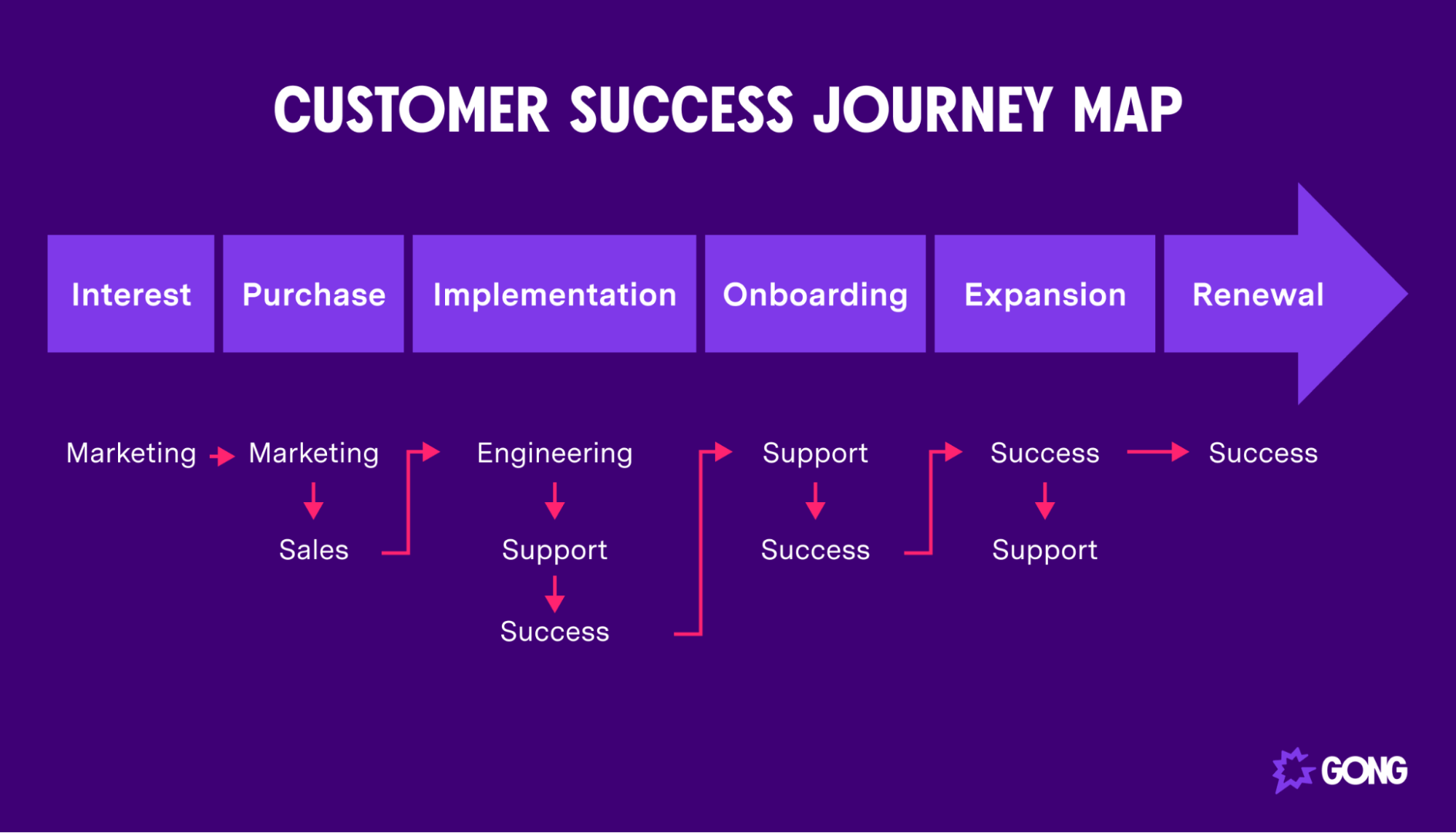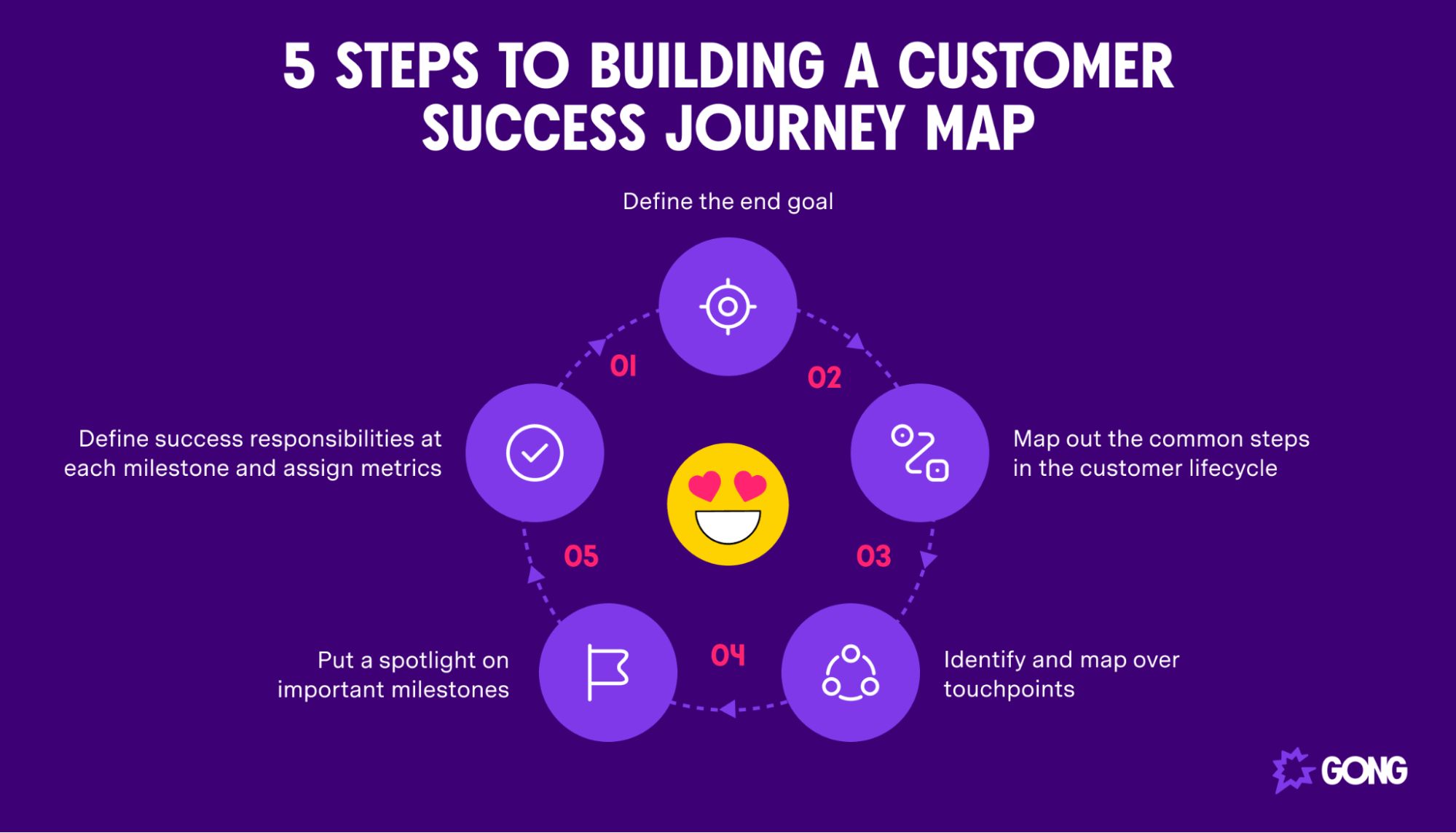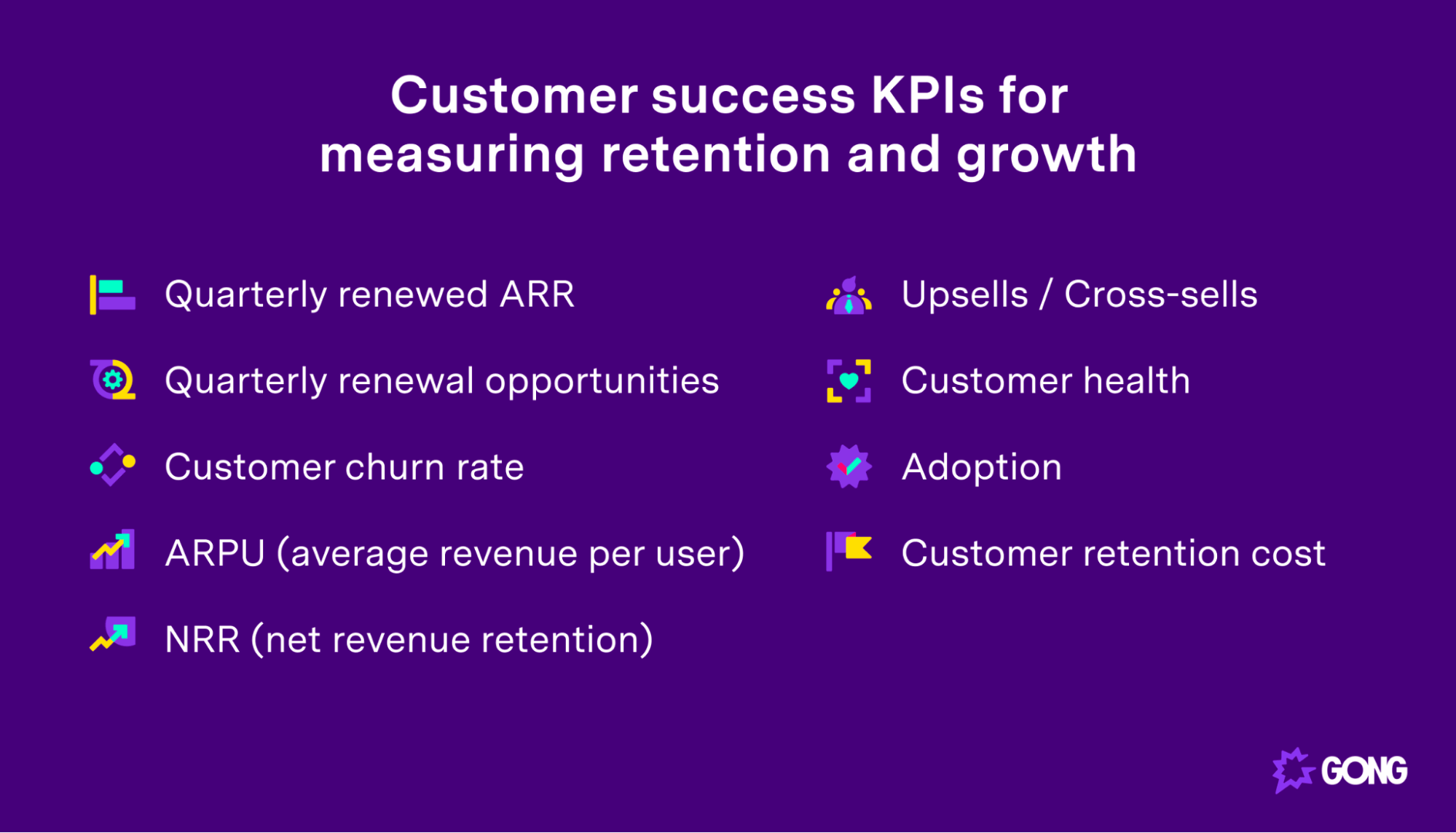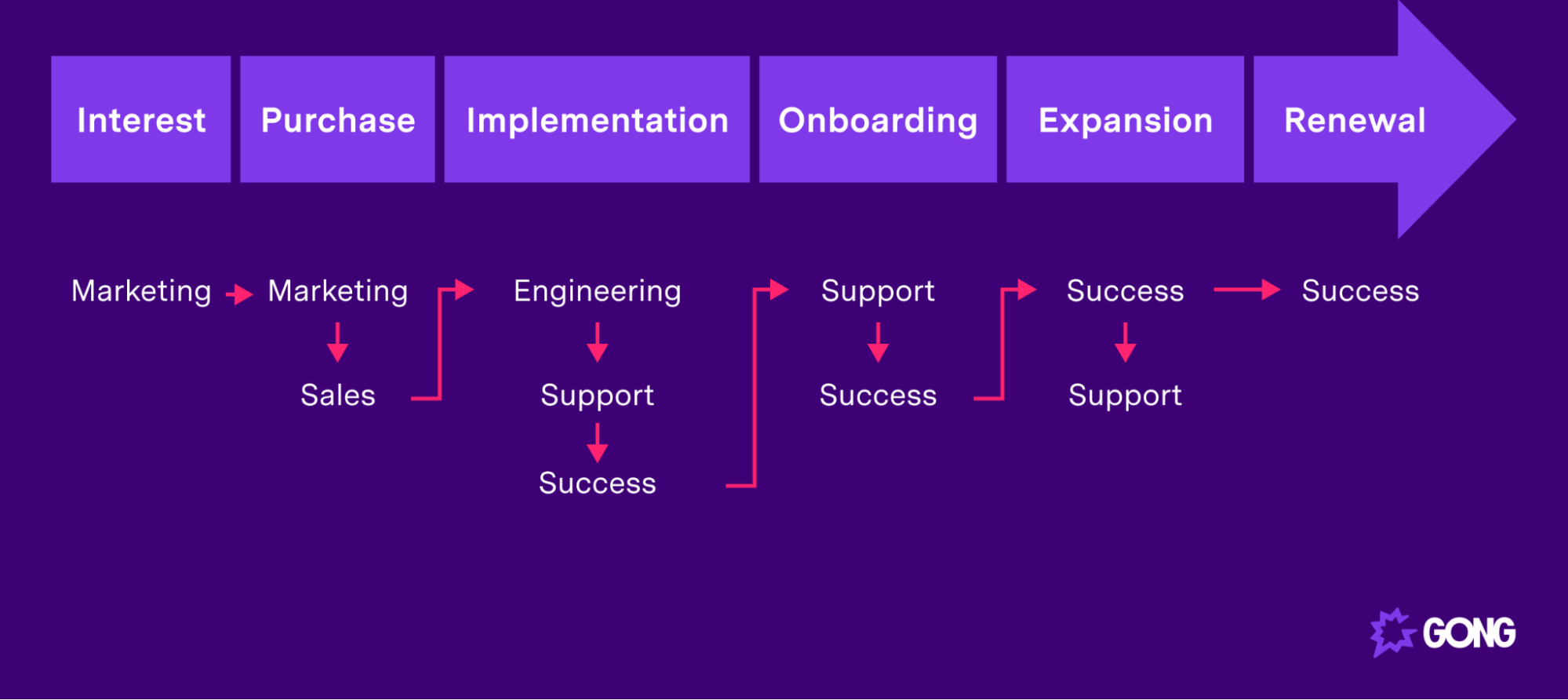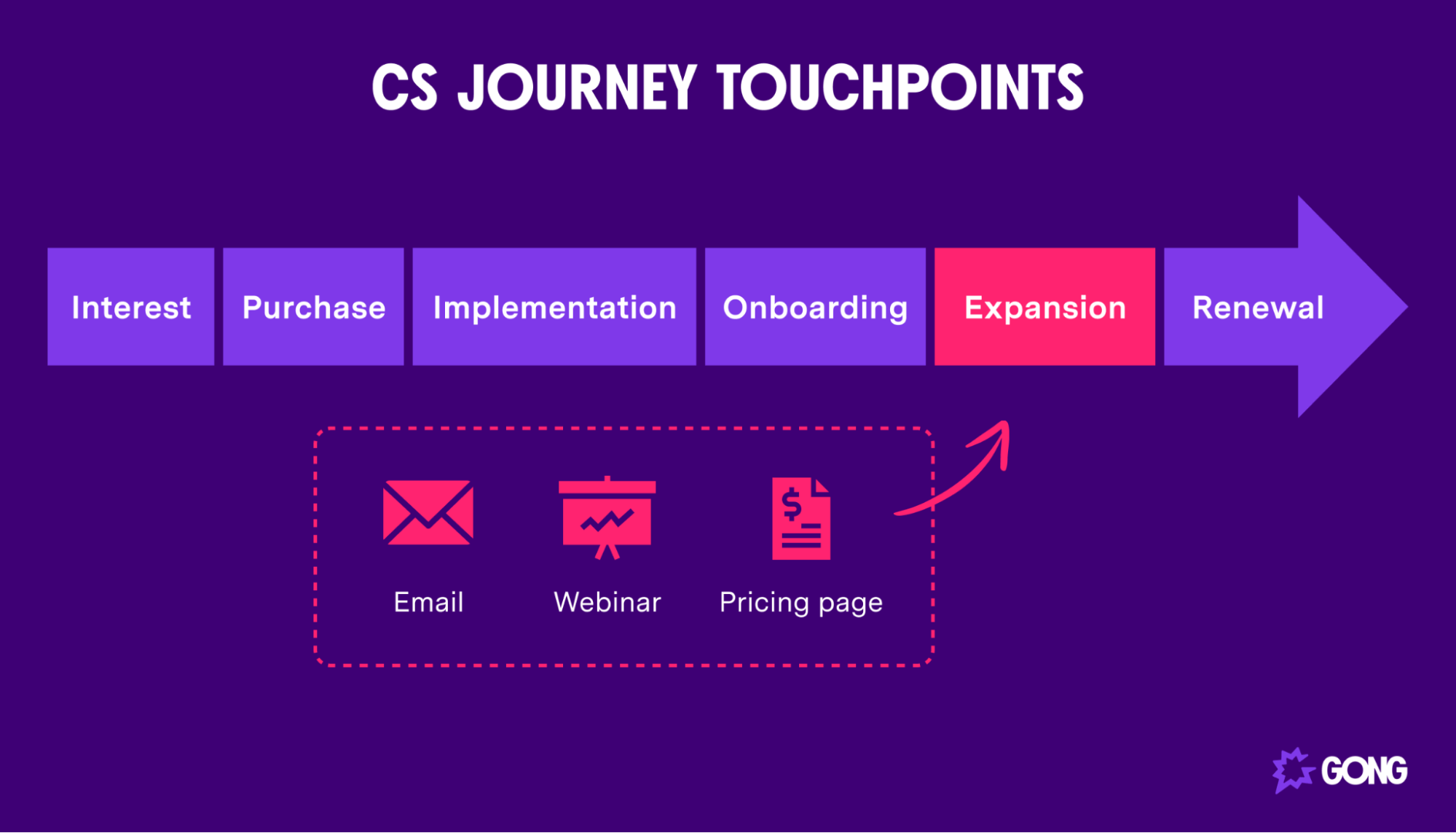Build a customer success journey map in 5 steps

Growth-focused customer success teams have one primary objective: to assist buyers in their journey toward reaching the goals that made them buy in the first place.
To be effective at this endeavor, success teams need to understand exactly what that journey looks like for their buyers.
Customer success journey mapping is the process that uncovers this roadmap and puts customer actions and touchpoints in the context of achieving these goals.
In this guide, we’ll explore the five critical steps to follow when building a customer success customer journey map. Follow along and build your map to improve the effectiveness of your customer success team and drive retention rates.
JUMP TO EACH SECTION TO LEARN MORE:
What is a customer success journey map?
A customer success (CS) journey map visually represents the typical stages a customer goes through. It begins when they recognize they have a need and follows through to purchase, implementation, and eventual renewal.
It’s similar to the traditional customer experience or customer journey map, except with a more specific focus on the customer success element.
Where a normal customer journey map might end at the point of purchase, a customer success journey map goes a step further and details all the touchpoints that happen after the initial purchase. It highlights customer journey management which leads to contract renewal.
Here’s an example of what a CS journey map might look like:
Note that the above example has two components:
- The broad journey stage the buyer is in (e.g. implementation)
- The teams that are involved at the point (e.g. support)
That’s because the purpose of designing a customer journey map is not only to understand the broad decision-making process of a typical customer but to map out the customer’s specific interactions with our company along the way.
With this information in mind, we are better positioned to adjust our customer success process to improve on goals like increasing feature adoption and reducing churn.
For instance, consider a typical SaaS product. We might identify that under our current process, the customer is handed off from sales to engineering for implementation and then over to success once the product is completely integrated.
We might introduce customer success earlier in the process to improve feature adoption.
You’ll note that our description of a CS journey map included many words like “broad stages” and “typical customer.”
That’s because the map is not designed to capture every path or interaction a buyer could have; that would be too convoluted and messy to use.
Instead, our plan is to focus on the typical journey a buyer goes through and build a map covering most of the use cases.
5 steps to building a customer success journey map
Follow these five steps to plan your customer experience and build your initial customer success journey map.
Bear in mind, though, that no map is perfect or complete and that you should revisit and review the accuracy of what you’ve created regularly (yearly, at a minimum).
1. Define the end goal
A potentially obvious but necessary first step in building a customer success journey map is getting absolutely clear on what we mean when we say “success.”
But once you actually ask yourself the question, it becomes easy to see why many CS leaders forego this step.
For other customer-facing departments, defining success is fairly straightforward.
For sales, it’s getting the deal across the line. For customer support, it’s resolving the ticket. However, both may have more specific metrics assigned, such as a deal value for sales or a ticket handling time benchmark for support.
In the case of customer success, our primary goal is to increase retention and customer loyalty (with a secondary goal of account expansion).
But if we’re looking at a buyer on an individual basis, retention can only be measured in hindsight. Only once the buyer has churned can we precisely state how long they stayed with us.
Retention and churn metrics like these are fine at the group level (we’re still making progress if we’re bringing churn rates down and average contract lengths up).
But we need to get a little more granular when measuring individual success.
For instance, you might track “goal completion” as the primary metric for individual success, where the sales rep communicates information about the customer’s primary goals to the CS manager, who is then responsible for helping the client achieve them.
Or, you could look at feature adoption and measure the percentage of relevant features that the individual buyer is currently using.
Before getting started on building your first CS journey map, determine exactly where the map is leading.
2. Map out the common steps in the customer lifecycle
Your next step is identifying and mapping out the most common steps in the lifecycle.
Here’s a broad example of what you’re looking to achieve:
You’re going to need to speak with your buyers here. Interview or survey your existing customer base to ask about the steps they took to become your buyer and any steps they engaged in thereafter.
Collate and simplify this data into broad stages, like in the above.
While you want to keep the journey map as simple and visual as possible — avoiding convoluting the map with too much text — you may find it helpful at this stage to define exactly what each of those steps involves.
For example, you may put some upper and lower boundaries on the “Onboarding stage”:
Onboarding begins as soon as the new customer account is set up and their existing tech is integrated. It ends once the Customer Success Manager has completed the final video training session.
3. Identify and map over touchpoints
An essential step in customer journey management is to detail the activities a buyer engages in at each journey step. Pay particular attention to the touchpoints that your company plays a part in.
Let’s narrow in on the expansion stage as an example. Some touchpoints might be:
- Email: Educational content sent as part of a lead nurture campaign
- Webinar: Webinars on how to use a series of your product’s features
- Customer support: Tickets that ask for clarification on how to use a particular function
- Customer success manager: Quarterly business review meeting
- Website: Pages that display pricing and features
Here’s how this should look in your customer success journey map.
This exercise aims to create a jumping-off point for internal process changes that improve your customer success team performance.
For example, you might create a process that asks customer support specialists to loop in CS managers when a buyer raises a feature-related request.
4. Put a spotlight on important milestones
The typical customer journey involves dozens of touchpoints, but we can assign particular importance to a handful of interactions that signal progress toward one of our goals. We call these milestones.
In the sales part of the customer journey, booking a sales demo is an obvious milestone.
From the perspective of customer success, examples include:
- 100% license utilization
- 80% feature adoption
- Engaged with the first piece of post-purchase educational content
- Viewed pricing and features page (signaling that they may be interested in upgrading)
Review your customer success journey map, and identify which post-purchase touchpoints are key milestones.
5. Define success responsibilities at each milestone and assign metrics
Now, define the CS team’s interaction at each point.
Let’s say, for example, that one of your milestones is 80% feature adoption.
You know from experience that the typical buyer can get to the first 80% on their own (guided by your educational content) but that the last 20% needs some focused guidance.
The CS manager’s interaction here, then, might be to schedule a video session to walk the buyer through use cases for the remaining features (assuming they are relevant to their needs).
Each activity should also have a metric assigned to it. Some of these milestones are already metrics in and of themselves (license utilization, for instance).
But you can, and should, go one step further and determine the metrics or KPIs that measure the success of your CS people. Take the milestone of “Viewed pricing and features page,” which tips the CS manager’s action of a consulting call.
A relevant metric here would be “% account growth.” For instance, if the CS manager expands that account from a $10,000 per month client to a $15,000 one, their % account growth is 50%.
Create an effective customer success journey with Gong
Customer success journey mapping is an insightful process for understanding the broad steps your buyers go through from consideration to purchase to retention.
That information is only helpful if you use it to inform internal process changes that seek to improve the customer experience, combat churn, and drive retention.
To make informed changes to your customer success interactions, you need to know what’s working and what isn’t.
Gong’s revenue intelligence platform helps customer success leaders:
- Identify churn indicators to take action quickly and prevent buyers from leaving
- Track and review all account activity to quit relying on human memory
- Uncover the word tracks and behaviors that the best customer success managers use to make these standard practices
Learn more about Gong’s powerful suite of revenue intelligence tools by booking a demo with one of our success experts.
